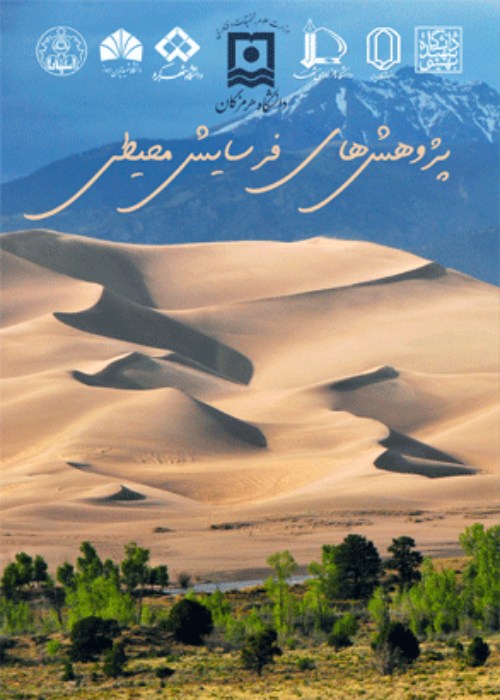Investigating Sedimentary Changes and Paleoclimate based on Elemental Analysis and its Indicators in Jazmurian Playa
Considering that there are no accessible works and evidence regarding the nature and extent of environmental changes caused by climate changes in the future, it is possible to reconstruct past climatic events through the archives of lake sediments left over from these climatic periods. Reconstruction of the past climate is a guide to understanding what can be expected in the future under similar conditions. According to the geographical location of Iran, climatic and environmental changes are a suitable platform for paleoclimatological research in order to reconstruct ancient environments and their shaping factors. Climatic conditions and their changes have played a significant role in the formation of the first human civilizations. The rise and fall of some ancient civilizations have been directly related to climatic changes. There is no comprehensive information about the conditions of Iran during the Holocene. Although the Middle East has always been an interesting place for researchers because it was the first place for agriculture and domestication of animals, compared to other places, this region has been less studied. However, the studies conducted on the climatic changes of the Iranian Plateau during the Holocene present evidence that shows that the climate of this land has changed intermittently, which has played an important role in the creation and destruction of ancient civilizations and their migrations.
In order to reveal the changes in climatic conditions in the past and present, this research investigates the paleoclimate in this region through the evaluation of laboratory analyses (i.e., granulometry, elemental analysis and its indices) on sedimentary data and the interpretation of paleoclimate conditions. The method of this research is a field, laboratory and analytical method conducted based on collecting data from the surface of the earth, performing the analysis, analyzing them and examining the influencing factors by integrating the results. The research data consists of library data and written sources, image data, sediment data collected during the field visit of the region and laboratory analyses.
According to the study of sedimentary cores in Jazmurian playa which were taken from the northern margin, the sedimentary type of the samples of the first core is generally closer to the mountains than the sandstone type, and in some samples, it is sandstone with a little Gravel is formed, and the samples of the second borehole, which is closer to the center of the playa, are generally composed of sandy silt. The process of sandification in these sediments is the same from the surface to the depth, and in the middle facies of the sedimentary core, it shows a periodic increase and again follows a decreasing trend, which indicates a wetter period compared to the previous period. It is self-dimensional and this facet is clear in both cores. Of course, it should be mentioned that the first core, because 13 facies are investigated, shows more fluctuations than the second core, which has 6 layers at a depth of 200 cm. Fluctuations in facies have become less apparent. The S/M index shows that in core number 1, the sediments from the middle surface of the core are muddy and it shows calmer environmental conditions, it becomes a little sandy in the middle, and then up to a depth of 180 cm, the trend is muddy again, and after that, the conditions are more humid and the S/M index is sandy. In core number 2, the range of changes is less, but almost in the middle of the core and at a depth of 170 cm, sands flow, which indicates a humid environment, similar to core number 1. The elemental analysis of ICP and climatic indicators in sedimentary cores determine the fluctuations of humidity, dryness and ambient temperature in different sequences in the Jazmurian region. For example, the high level of Mn indicates a reductive environment, while the calcium element, like sodium, indicates the dryness of the environment. Also, the two elements of manganese and magnesium indicate regeneration conditions, more precipitation, more water entering and less evaporation. The increase in Al values in the sediments indicates an increase as a result of more debris entering the environment.
The results show that these elements and indicators well determine the paleoclimate fluctuations in the Jazmurian sedimentary environment in the sedimentary cores collected from the region during the Holocene period and in general, the range of climatic fluctuations in Jazmurian is very high. Also, the grain size and sediment indicators have been very useful in the interpretation of the sedimentary environment in the Jazmurian region and they have clarified the ancient climatic conditions in this sedimentary environment.
- حق عضویت دریافتی صرف حمایت از نشریات عضو و نگهداری، تکمیل و توسعه مگیران میشود.
- پرداخت حق اشتراک و دانلود مقالات اجازه بازنشر آن در سایر رسانههای چاپی و دیجیتال را به کاربر نمیدهد.



